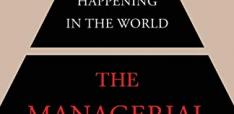Post-Conflict Chic
A year ago, at Aman’s Amanjena resort in Morocco, I was thinking the global ruling class is slowly deconstructing its calendar. The monied migration, once defined by events like Art Basel, the Monaco Grand Prix, and the World Economic Forum, is now becoming more individualistic. As in the 1990’s (not coincidentally the early days of the Sundance Film Festival and other events), people are actually going to events they enjoy attending rather than places they feel they need to make an appearance.
Last year, I think the big thing among elites was small resorts. Bonus points for properties designed by architects with a high vowel-to-consonant ratio and resorts whose rooms are large enough that “villa” can be used rather than “bungalow” or “hut” in marketing materials. Even more bonus points for properties designed so that no guest can see any other guest’s “villa” and for properties with at least three detached, purposeless structures that are thatched, over water on stilts, and filled with idiosyncratic, vaguely-Indonesian floor pillows.
This year is different, and I think it is defined by a “post-conflict chic” mode. Post-conflict is cool. The cool kids know the difference between Somalia and Somaliland; an improbable number of people seem to have friends with amazing jobs banking in Bosnia or marketing in Medellin.
What Aman resorts were last year, the Serena Hotel has become. Serena is a sort of “bunker away from home” for people who waste airport VIP lounge wifi experimenting with color choices for armored Range Rovers. The hotel bar is a mix of overheard corruption, poorly-crafted cocktails, and combat fatigues. The list of locations for Serena Hotels reads like a list of photography locations for any post-conflict tourist’s Facebook albums, from Kabul, Afghanistan to Swat in Pakistan to the Lake Kivu region in Rwanda.
The Toyota Hilux pickup truck is the newest must-have addition to the garage. Favored by everyone from the UK’s Top Gear to Somalia’s al-Shabaab, it’s the new status symbol for the international adventurer who already has multiple Rolex Submariners. The Hilux is fast becoming what the Iridium telephone was ten years ago, but it symbolizes global interconnectedness in a less optimistic way. While Iridium suggested the world was a place of universally-accessible collaboration and communication, the indestructible Hilux is an emblem of non-connectedness, bad roads, and adventuresome independence.
Military-influenced (versus the 1990’s “military-inspired”) fashion is a piece of this “post-conflict” storyline, outlined by the savvy trendspotter and novelist William Gibson in his new book Zero History. Like the fortified Serena and the reliable Hilux, overbuilt trousers are part of this year’s trend: be prepared for glamorously unlikely chaos. Never before have first class seats seen so many unnecessary gussets and reinforced seams. Features originally designed for rappelling and lapels designed to reveal military decorations are finding their way to Milano and Tokyo, cities that haven’t witnessed war in generations.
But the scariest piece of this trend isn’t the combat-ready fetishism of it all – it’s that the people taking part in these trends are (often unwittingly) militarizing the whole concept of privilege (and making wealth inextricably intertwined with violence). Just as the wealthy once fled cities for the suburbs, they now – in huge numbers – have homes in far-flung areas, near wars that have made or grown their fortunes. The post-conflict zones of the world have become gated communities for the next generation of millionaires and billionaires, often with security paid for by the U.S. taxpayer.
So 2012 is the year of post-conflict chic. Never in our collective, global history has the smell of stale war been so similar to the smell of fresh money. The line between stable and unstable governments is the new coastline. And the post-conflict tourists are buying up all the beachfront property.
